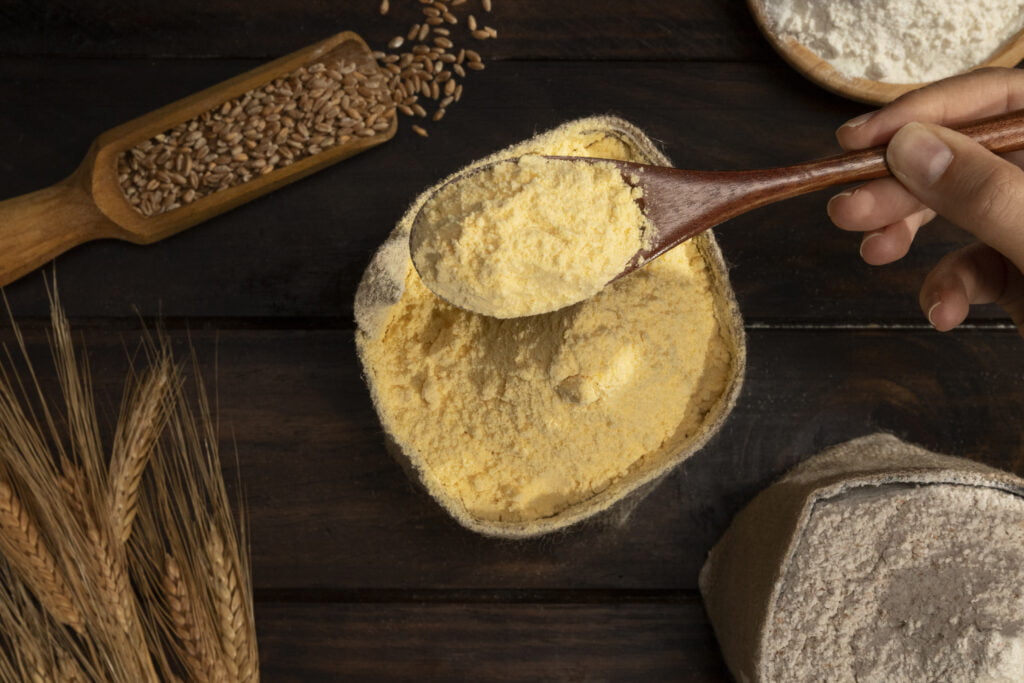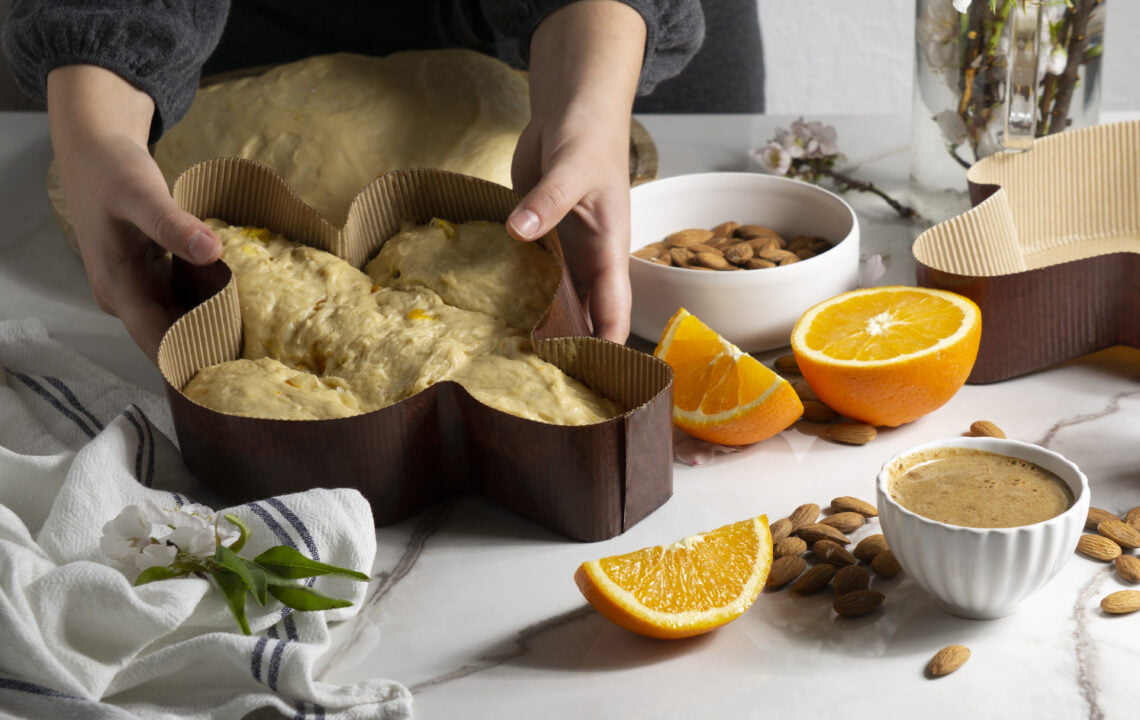Nutritional Yeast Vs Active Dry Yeast
On the other hand, active dry yeast is essential for bread-baking enthusiasts everywhere. This yeast, when activated, plays a vital role in causing bread dough to rise, resulting in light and airy loaves that are a delight to eat. While many bakers rely on it, some opt for different approaches, such as using homemade starters from water and flour, to add a unique touch to their bread-making process.
Composition
Nutritional Yeast: Nutritional yeast is a type of yeast that’s been deactivated through heating and drying. It’s made from a specific yeast strain and comes in flakes or powder. People love its cheesy taste in dishes.
Active Dry Yeast: Active dry yeast, meanwhile, is live yeast used mainly for baking. It contains dormant yeast cells protected by a coating. When mixed with warm water and sugar, it wakes up and helps the dough rise by releasing gas.
Cooking Related Uses
Nutritional Yeast: Nutritional yeast is known for its savory taste. It can be added to soups, sauces, salads, and even popcorn for extra deliciousness. It’s especially great in vegan cooking as a cheese substitute, giving dishes that cheesy flavor without dairy.
Active Dry Yeast: Active dry yeast is a must-have for baking. It helps bread and rolls rise, making them fluffy and light. Just mix it with warm water and sugar, and it starts bubbling away, making your dough nice and airy.
Nutritional Profile
Active Dry Yeast: Active dry yeast has some nutrients, but its main job is to help dough rise, not to provide nutrition.
Benefits of Nutritional Yeast
1. Nutrient-Rich: Nutritional yeast is loaded with essential nutrients like protein, fiber, B vitamins (including B12), and minerals, making it a great addition to vegetarian and vegan diets.
2. Immune Support: Thanks to its high B vitamin content, nutritional yeast aids in boosting the immune system, helping the body fight off infections and illnesses.
3. Digestive Health: The fiber in nutritional yeast promotes healthy digestion by supporting regular bowel movements and preventing constipation.
4. Energy Boost: With its high protein and B vitamin content, nutritional yeast provides a natural source of energy, assisting in converting food into fuel for the body.
5. Vegan-Friendly: Due to its savory, cheese-like flavor, nutritional yeast is a popular dairy-free option in vegan cooking, adding richness and depth to dishes without the need for animal products.

Benefits of Active Dry Yeast
1. Leavening Power: Active dry yeast is essential for baking, as it produces carbon dioxide gas that causes dough to rise, resulting in light and fluffy baked goods.
2. Dough Development: When activated, active dry yeast triggers fermentation, promoting gluten development in dough, which contributes to its structure and texture.
3. Versatility: Beyond breadmaking, active dry yeast can be used in a variety of baked goods such as rolls, pizza dough, and pastries, ensuring consistent and dependable results.
4. Long Shelf Life: Properly stored, active dry yeast has a lengthy shelf life, maintaining its effectiveness for extended periods, making it a convenient staple for home bakers.
5. Flavor Enhancement: In addition to its leavening properties, active dry yeast adds a subtle yeasty flavor to baked goods, enhancing their overall taste and aroma.
Safety & Precautions with Active Dry Yeast and Nutritional Yeast
2. Check Expiry Dates: Always check the expiry dates on packages of active dry yeast and nutritional yeast before use. Expired products may not perform as expected and could pose health risks.
3. Handling Precautions: When handling active dry yeast, avoid inhaling the particles to prevent respiratory sensitization. Wear a mask or work in a well-ventilated area if necessary.
4. Allergen Awareness: Be mindful of potential allergies to yeast and other ingredients present in nutritional yeast. If you have known allergies or sensitivities, read ingredient labels carefully and consult with a healthcare professional if unsure.
5. Moderation: Use both active dry yeast and nutritional yeast in moderation to avoid overconsumption of nutrients and potential adverse effects. Follow recommended serving sizes and recipes to achieve desired results without excess.
6. Quality Assurance: Purchase active dry yeast and nutritional yeast from reputable sources to ensure quality and safety. Look for products that undergo rigorous testing and adhere to food safety standards.
7. Dietary Considerations: Consider individual dietary needs and preferences when incorporating active dry yeast and nutritional yeast into recipes. Choose alternatives or substitutes if necessary to accommodate specific dietary restrictions or preferences.
FAQs
No, nutritional yeast and active dry yeast are not the same. Nutritional yeast is a deactivated form of yeast used primarily as a seasoning or food additive, while active dry yeast is a live yeast used as a leavening agent in baking.
2. Can nutritional yeast be used as a substitute for active dry yeast in recipes?
No, nutritional yeast cannot be used as a substitute for active dry yeast. Nutritional yeast does not have leavening properties and is typically used for flavor enhancement, while active dry yeast is essential for making dough rise in baking.
3. What are the nutritional benefits of nutritional yeast compared to active dry yeast?
Nutritional yeast is rich in protein, B vitamins, and trace minerals, making it a valuable addition to plant-based diets. Active dry yeast, while containing some nutrients, is primarily used for its leavening properties rather than its nutritional content.
4. Are there any health concerns associated with consuming nutritional yeast or active dry yeast?
Nutritional yeast is generally considered safe for consumption and can offer health benefits when consumed in moderation. However, some individuals may experience digestive discomfort or allergic reactions. Active dry yeast is also safe for most people but may cause issues for those with yeast allergies or certain medical conditions.
5. How should nutritional yeast and active dry yeast be stored?
Nutritional yeast should be stored in an airtight container in a cool, dark place to maintain its freshness. Active dry yeast should be kept in a sealed container in the refrigerator or freezer to prolong its shelf life.
6. Can I use nutritional yeast and active dry yeast interchangeably in recipes?
No, nutritional yeast and active dry yeast cannot be used interchangeably in recipes due to their distinct purposes and properties. Using the wrong type of yeast can result in undesirable outcomes in cooking and baking.





